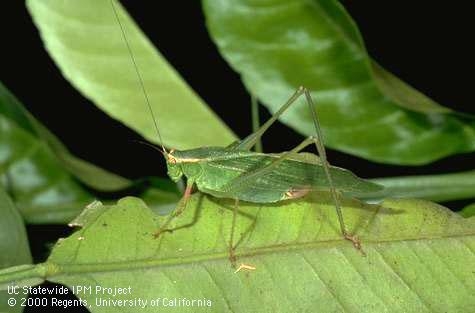Yesterday we posted an “Easter egg hunt” challenge, and as promised, here are the adult insects and spiders with their matching eggs or egg cases pictured. How did you do?
We welcome your feedback, so please sign in and post a comment below to tell us if the egg hunt was easy or difficult, and how many answers you guessed correctly. Or, you can write us a note about the challenge on our UC IPM Urban/Community Facebook page.
Now for the answers:
A. Harlequin bugs are colorful insect pests that cause damage when they suck fluids from plant tissue. Heavy infestations may cause plants to wilt, turn brown and die. Their eggs are drum-shaped and often brightly colored.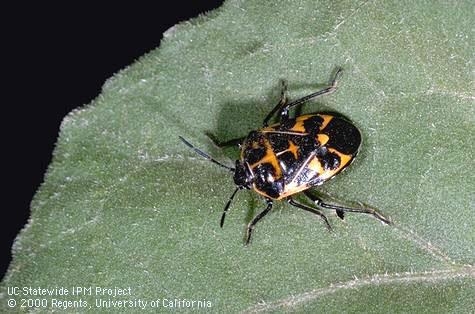
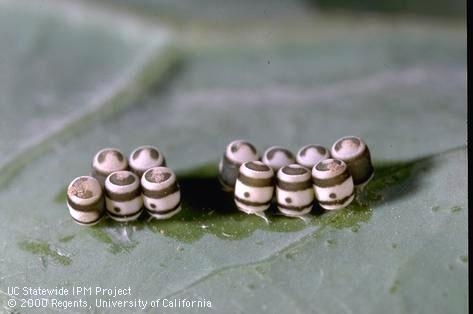
B. Leaffooted bugs are odd-looking insect pests with piercing-sucking mouthparts. Their feeding produces destructive damage on the fruit or plants they attach. Eggs of leaffooted bugs are brown, cylindrical, and laid end-to-end in a string-like strand.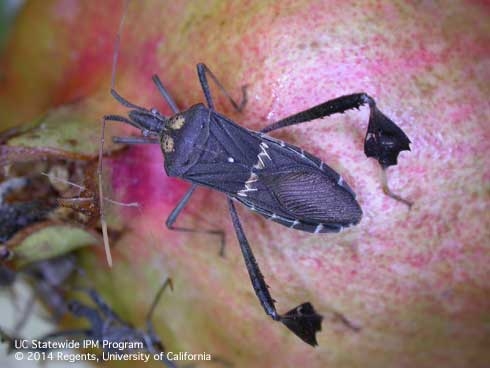
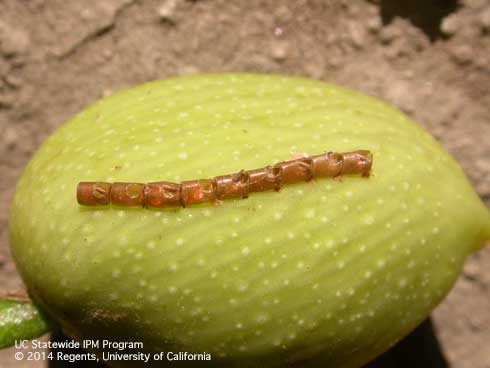
C. Tomato hornworm moths are large, sometimes with a wingspan of up to 5 inches! The larva or caterpillar of this pest is well-known and causes damage to plants, while adult moths do not. Hornworm eggs are laid singly on leaves and are not easy to see.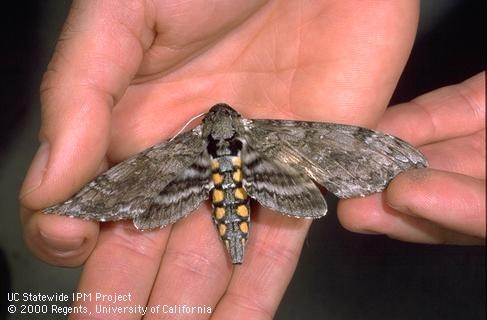
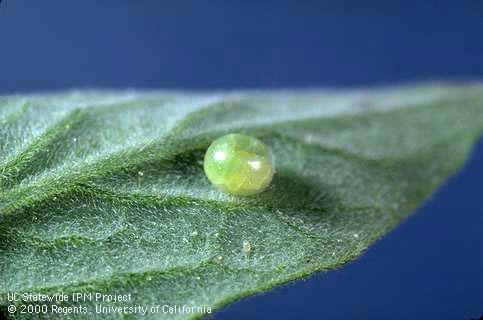
D. Female black widow spiders are feared by many people since they are poisonous and may bite. However, these shy spiders prefer to hide in holes and crevices and within clutter outdoors. Their egg sacs look like fluffy cotton balls and may have 300 eggs inside.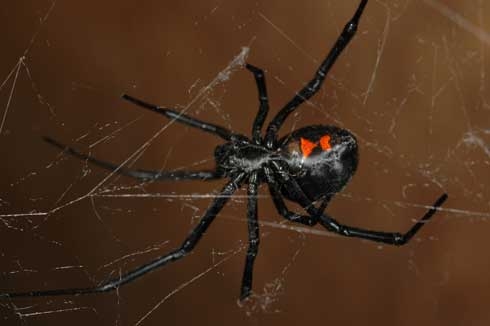
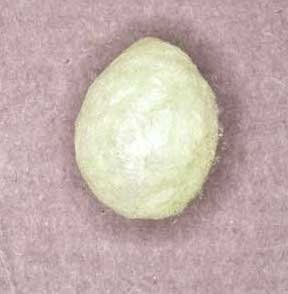
E. Cockroaches give off allergens that lead to asthma and can also transmit bacteria that causes food poisoning. The species pictured, the American cockroach, are common outdoor pests and are about two inches long, and their egg cases each contain about 12 young. A female cockroach can produce over 800 cockroaches in one year! To learn more about cockroaches, visit the UC IPM Pest Notes: Cockroaches. 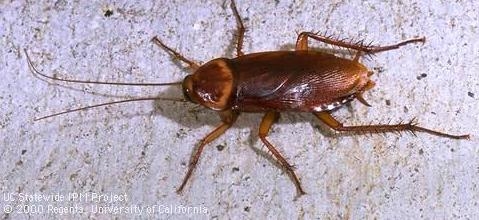
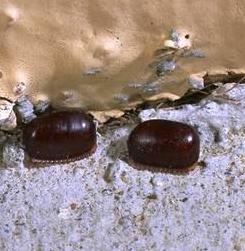
F. Green lacewings are beneficial insects often spotted hovering around porch lights at night. Some adults are predaceous, while others feed on honeydew, nectar, and pollen. Their eggs are laid singly on long silken stalks attached to plant tissue, sometimes in small groups.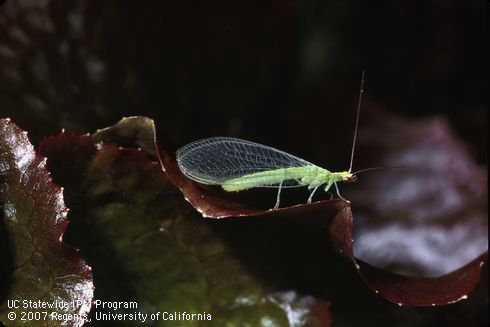
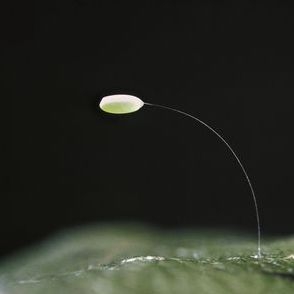
G. Convergent lady beetles (often called lady bugs) are beneficial insects that eat some plant pests, especially aphids. The eggs of this species are bright yellow, football shaped, and laid in clusters. Eggs of other lady beetle species have similar shapes but may be white, beige, or lighter in color.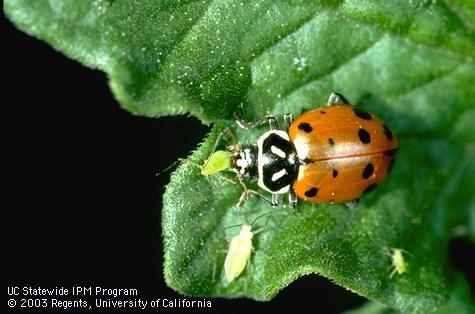
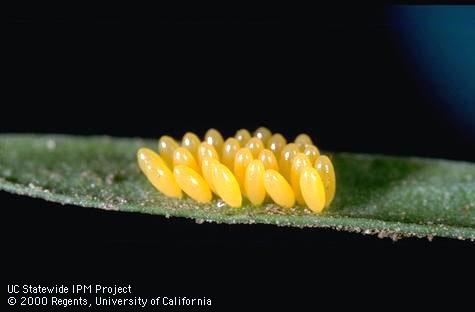
H. Bed bugs are highly reviled pests, and yet many people don't realize that bed bugs and their eggs are not microscopic, and can be seen with the naked eye! Watch the IPM video “Don't bring bed bugs home when you travel” to learn how to avoid introducing this pest into your home after a trip.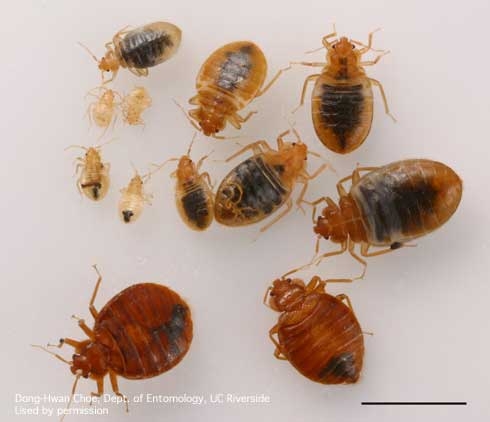
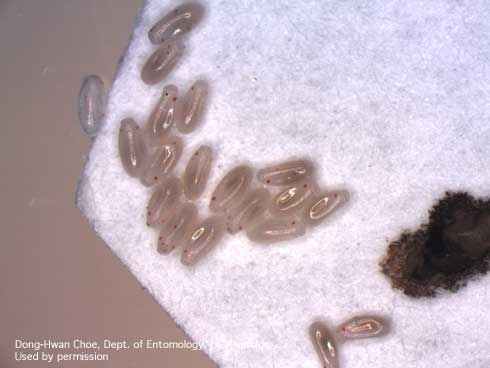
I. Brown widow spiders are an invasive species related to black widows, but their bite is much milder than that of the black widow spider. The egg sacs of brown widow spiders resemble large grains of pollen.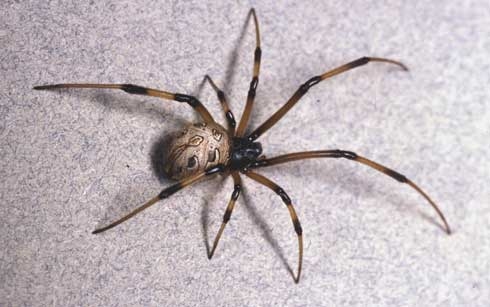
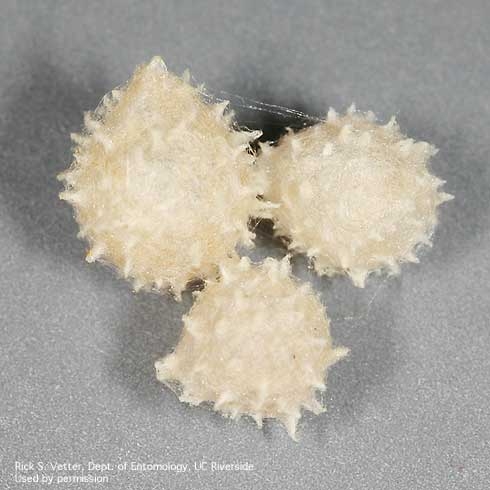
J. Praying mantid adults may be green, yellow, or brown and feed on many kinds of insects, sometimes even beneficial ones; however, they are still important predators in the garden. Praying mantid egg cases can contain dozens to hundreds of eggs. Egg cases are usually stuck to wood, fences, tree bark, or other plant material.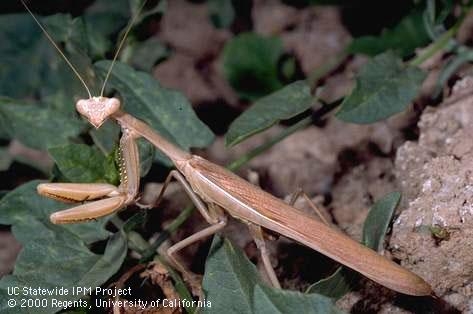
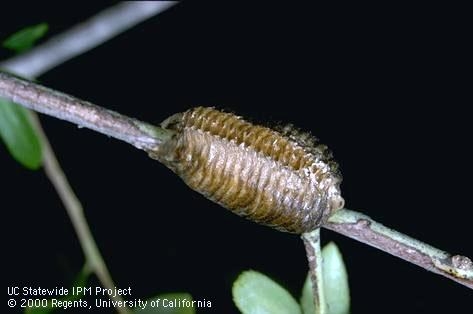
K. Assassin bugs are colorful beneficial insect predators that stalk or lie in wait for their prey. They have a segmented, needle-like beak. There are many species of assassin bugs but the eggs of the leafhopper assassin bug (adult and eggs pictured here) are barrel-shaped and laid openly in groups on plant surfaces. 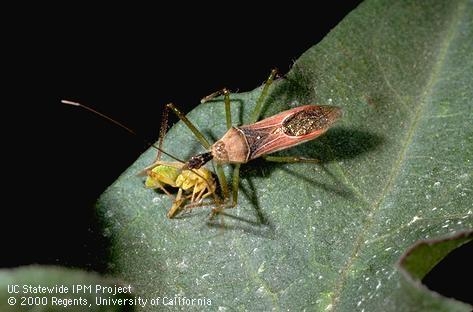
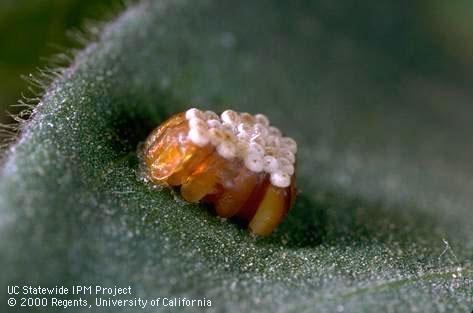
L. Head lice – simply reading the name of this pest may cause you to begin itching your scalp! Sometimes people use unnecessary chemicals to rid themselves or their family of this pest. These choices may be dangerous as well as ineffective. Read about less toxic options in the UC IPM Pest Notes: Head Lice.![Head lice life stages. (Photo: Dr. Shujuan [Lucy] Li) Head lice life stages. (Photo: Dr. Shujuan [Lucy] Li)](http://ucanr.edu/blogs/ucipmurbanpests/blogfiles/51311.jpg)
![Head lice eggs. (Photo: Dr. Shujuan [Lucy] Li) Head lice eggs. (Photo: Dr. Shujuan [Lucy] Li)](http://ucanr.edu/blogs/ucipmurbanpests/blogfiles/51410.jpg)
M. Mosquitoes are pests to watch out for since some species are capable of transmitting diseases. The mosquito pictured here may transmit West Nile Virus; its eggs are laid in batches that float in “rafts.”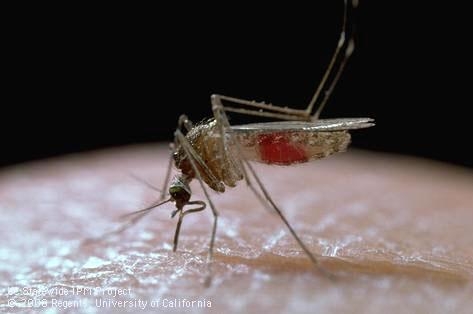
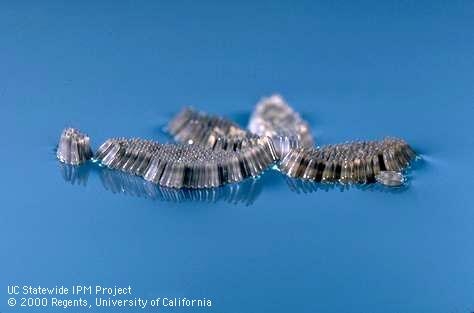
N. Katydids are related to grasshoppers but have wings that resemble leaves. In their immature, or nymphal stage, they can damage fruit causing fruit to become misshapen. Katydid eggs are found on twigs and leaves in two overlapping rows.